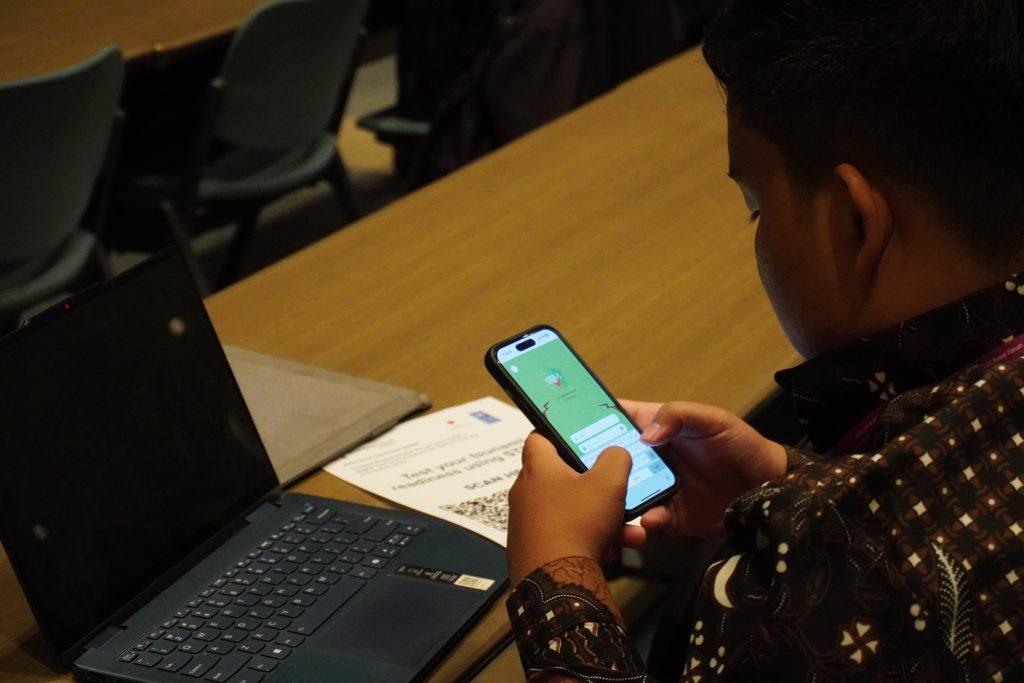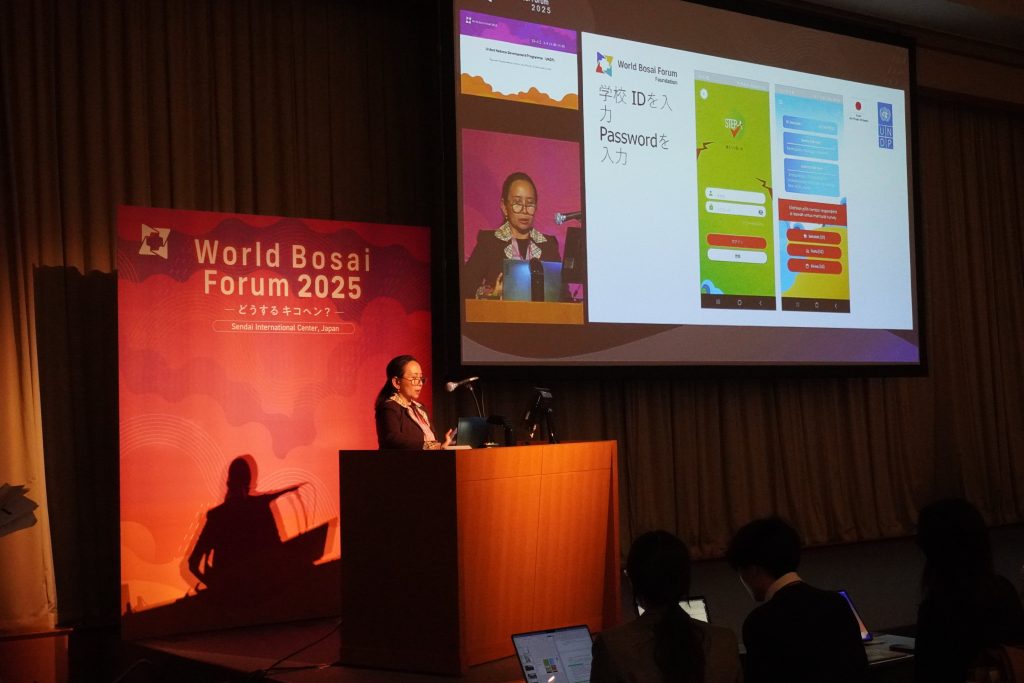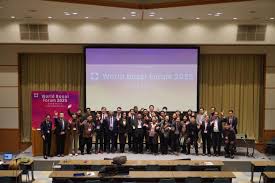Between 1970 and 2022, disaster events in Asia and the Pacific have claimed over two million lives and caused an estimated USD 2.7 trillion in economic damages. Tsunamis rank as the third deadliest and the fourth most economically destructive hazard in the region.
Ms. Hideko Hadzialic, Director of the UNDP Representation Office in Tokyo, highlighted Japan’s long-standing commitment to tsunami preparedness during the UNDP Oral Session at the World Bosai Forum 2025. “In Japan, preparedness for tsunamis is ingrained in our culture.
From teaching children evacuation procedures to preserving historical knowledge of past tsunamis, these practices are built on centuries of experience facing disasters. These lessons inspire Japan’s dedication to supporting global disaster preparedness and risk reduction efforts,” she emphasized.
Japan’s Commitment to Tsunami Preparedness and Its Regional Impact Across the Asia-Pacific
Japan’s dedication to public education and disaster awareness was evident in the swift and coordinated response of citizens during the 2024 Noto Peninsula earthquake. Communities that regularly conducted disaster drills evacuated more efficiently, demonstrating the effectiveness of preparedness.
As one resident remarked, “Everyone could have died if no training had been conducted regularly; it was not a miracle, the drills paid off.”
This culture of preparedness—fostered through ongoing drills, designated disaster preparedness days, and integration into school curricula—has been critical in saving lives.
To extend these practices across the Asia-Pacific region, the Government of Japan partnered with UNDP on the regional Tsunami Project, which focuses on enhancing tsunami preparedness through education and community engagement.
At the 2025 World Bosai Forum in Japan, the UNDP oral session showcased key achievements from the Tsunami Project, highlighting insights from school tsunami evacuation drills and early warning systems.
The session also spotlighted the STEP-A (Strengthening Tsunami and Earthquake Preparedness Assessment) digital tool, underscoring its pivotal role in enhancing tsunami preparedness.
Live Demonstration: STEP-A’s Impact on Tsunami Preparedness
During the oral session at the World Bosai Forum, a live demonstration showcased the STEP-A mobile application, which enables schools to assess their tsunami preparedness.
Integrated into InaRISK, Indonesia’s national digital geospatial platform, STEP-A is transforming disaster readiness across the region.The interactive session allowed the audience to assess the tsunami preparedness of a hypothetical school in real time using the STEP-A app on their smartphones.
Participants saw the immediate results of their collective efforts, highlighting the tool’s effectiveness in evaluating and improving preparedness.In Indonesia, over 200 schools in tsunami-prone areas have engaged with STEP-A, taking the crucial first step toward ensuring their readiness for future disasters.
The process involves students, teachers, and administrators completing a series of questionnaires, which are then compiled into an overall preparedness index.
In Aceh, a region devastated by the 2004 Indian Ocean tsunami, several schools have incorporated STEP-A’s framework into their daily routines, integrating regular drills and preparedness assessments.One of STEP-A’s key advantages is its emphasis on promoting self-reliance in disaster preparedness.

By allowing schools to conduct self-assessments, the tool helps identify gaps in response strategies and drives targeted improvements.
The collaboration between local governments, NGOs, and school communities in Indonesia highlights STEP-A’s potential as a scalable model for other tsunami-prone regions across the Asia-Pacific.
The World Bosai Forum reinforced that the combined power of technology, education, and community action can save lives—but continued momentum is essential to sustaining this vital progress.
From Strategy to Action: Key Milestones of the Tsunami Project
The UNDP-Japan Tsunami Project has made significant strides in enhancing tsunami preparedness across the Asia-Pacific. In Southern Thailand, the initiative strengthened preparedness in 244 schools, equipping over 7,500 students and 470 staff with vital evacuation plans and drills.
Building on this success, the Royal Thai Ministry of Education incorporated the knowledge gained into a national curriculum for disaster preparedness in schools.Since 2017, the Tsunami Project, a collaboration between UNDP and the Government of Japan, has aimed to expand Japan’s tsunami preparedness principles across the region.
By engaging students, teachers, officials, and communities, the project has fostered a culture of preparedness, empowering children with the skills and knowledge to respond effectively in emergencies.

The initiative has supported schools, communities, and governments in conducting regular drills, improving evacuation strategies, and implementing comprehensive tsunami preparedness programs.
To date, 220,000 students, teachers, and school administrators from 800 schools in 24 Asia-Pacific countries have participated in tsunami evacuation drills and emergency response training, significantly enhancing their ability to act decisively during a tsunami.
Ms. Luh Sri Sudharmini, Headmaster of a primary school in Bali, Indonesia, emphasized the impact: “With support from the Tsunami Project, Tanjung Benoa has become more resilient, as all stakeholders work together to build synergies and ensure no one is left behind.”
Frequently Asked Questions (FAQs)
What is the Tsunami Project?
The Tsunami Project is a collaborative initiative between UNDP and the Government of Japan aimed at improving tsunami preparedness across the Asia-Pacific region. It involves schools, communities, and governments in regular drills, education programs, and the implementation of evacuation strategies.
How does the Tsunami Project help schools?
The project equips schools with tsunami evacuation plans, conducts regular drills, and provides disaster preparedness training to students, teachers, and school administrators. It also helps integrate disaster preparedness into school curricula.
How many schools have participated in the Tsunami Project?
Over 800 schools in 24 Asia-Pacific countries have participated in tsunami evacuation drills and emergency training, involving more than 220,000 students, teachers, and school administrators.
What impact has the Tsunami Project had in Thailand?
The project has strengthened tsunami preparedness in 244 schools in Southern Thailand, training over 7,500 students and 470 staff. It also helped the Royal Thai Ministry of Education develop a national curriculum for disaster preparedness.
How does the Tsunami Project promote community involvement?
The project engages students, teachers, officials, and community members to foster a culture of preparedness. It emphasizes collaboration among local stakeholders to ensure that all individuals are equipped with the knowledge and skills to respond effectively to a tsunami.
What is the significance of the Tanjung Benoa example in Indonesia?
With support from the Tsunami Project, Tanjung Benoa in Bali has become more resilient by fostering cooperation among stakeholders, ensuring that no one is left behind in the effort to build tsunami preparedness and community resilience.
Conclusion
The Tsunami Project, a collaboration between UNDP and the Government of Japan, has made significant strides in enhancing tsunami preparedness across the Asia-Pacific region. By equipping schools, communities, and governments with essential tools, knowledge, and training, the project has fostered a culture of disaster readiness, empowering individuals to respond effectively in the event of a tsunami.

